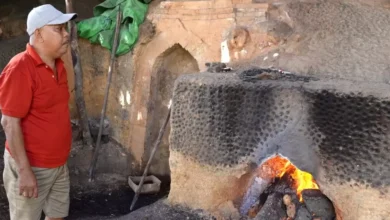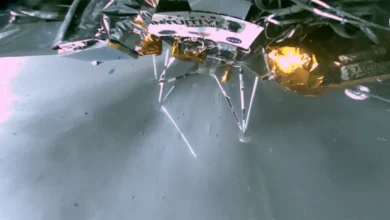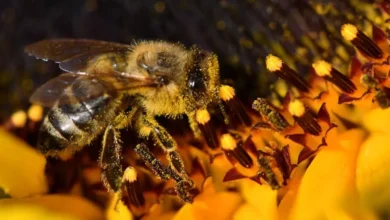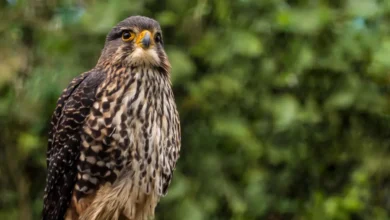Fenced in: how a million kilometres of invisible borders are harming wildlife
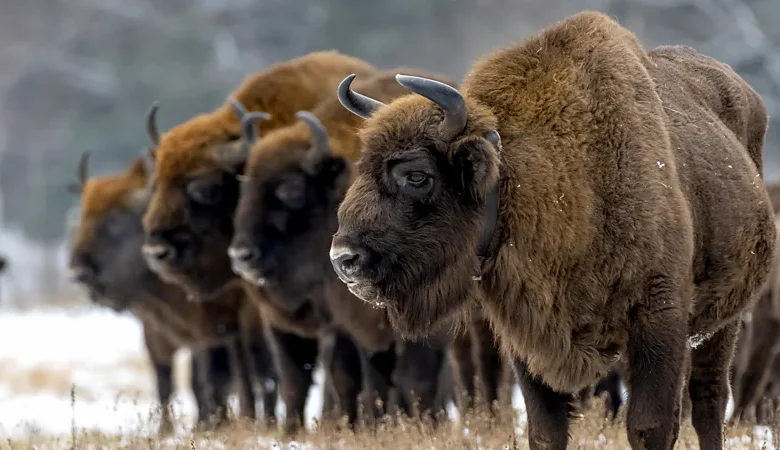
Modern fences are often so thoroughly impenetrable, they can slice up already-scarce habitats and restrict wildlife to increasingly small scraps of land. What can be done to reduce their impact?
The Białowieża Forest, which straddles Poland and Belarus, is one of the last remaining primaeval landscapes in lowland Europe. This wilderness is still home to many of the animals that have been wiped out elsewhere across the continent, including bison, wolves and lynx.
Three years ago, however, a new threat arrived in the midst of this haven: a mass of steel and razor wire, running 186km (115 miles) down the border between Poland and Belarus, dividing the ancient forest in two.
The fence, more than 5m (16.5ft) high, was erected by the Polish government in 2022 in an attempt to stop migrants, largely from the Middle East and Africa, from crossing over. But as ecologists feared, the structure has been just as effective at preventing the free movement of wildlife.
There were good reasons to suspect that the barrier would harm Białowieża Forest’s biodiversity. But tracking the real-life impacts of the new Polish fence has proven challenging. Scientists must negotiate the combined obstacles of exclusion zones, border security requirements and harsh winter weather.
Thanks to an urgency grant from the Polish National Agency for Academic Exchange, however, a group of Polish scientists is giving it a try. Using camera traps, snow tracking and in-person observations, the team is beginning to measure the barrier’s impacts on the forest. Their early results – which aren’t yet published – suggest that its flora and fauna are suffering in widespread – and occasionally surprising – ways.
Perhaps the most predictable of these impacts is that large animals can no longer move freely through the forest. “It’s not a permeable barrier. Wolves, bison, even red and roe deer cannot pass because of these barriers that are now there,” says Katarzyna Nowak, an assistant professor at the Białowieża Geobotanical Station, who is leading the research.
“This means that we’re going to see a decrease in genetic diversity, especially for animals like moose and lynx… That makes them less resistant to disease or pathogens, given they are very genetically similar to one another, so we can anticipate effects 10 years down the line or sooner,” says Nowak.
Some smaller animals can make it through to the other side, as Nowak’s research has shown. Snowy weather has revealed the footprints of carnivores – red foxes, pine martens and invasive raccoon dogs – going right up to the border and probably through the steel bars. For these animals, the constant presence of the security guards, and the scraps of food they offer, is an attraction rather than a deterrent. Soldiers have even told the researchers about receiving visits from domestic Belarusian cats, says Nowak.
…the length of fencing in the world could stretch to the Sun and back multiple times – Alex McInturff
It is not just the animals that are impacted. The vegetation around the fence has changed too, says Nowak. Non-forest species are attracted by the light that forest clearance lets in, finding a rare opportunity to flourish in the absence of deer, says Nowak. Meanwhile, potentially invasive species like the perennial plant Canadian goldenrod, more suited to pavements than forest, have arrived on the building materials used to build the barrier. “So now we have this strip in the middle of Białowieża Forest that is just becoming something else,” adds Nowak.
Many experts are now concerned that Białowieża Forest, which is renowned as one of Europe’s most pristine ecosystems, may have become collateral damage in a political crisis.

A global problem
Around the world fences are ubiquitous, used for everything from border security to conservation, to farming or the demarcation of private property. They are frequently constructed but rarely removed, says Alex McInturff, an assistant professor at the University of Washington. As the length of the world’s fences grows, experts are racing to understand their role in the landscapes they divide – and how to reduce their impacts.
Conservationists have historically focused on the impact of fences on the free movement of wildlife. But this underestimates the full spectrum of damage they can cause.
“The interesting thing about fences is that they are often invisible. They are so abundant, so common, that we’ve become almost blind to them. Yet, the length of fencing in the world could stretch to the Sun and back multiple times,” says McInturff. According to one study, there are more than a million kilometres (621,000 miles) of fences in the US alone, not including those that demarcate property boundaries in cities or suburbs.
In 2020, McInturff authored a paper highlighting the impact of fences on ecology. In doing so, he hoped to correct this blind spot and provide some pointers to conservationists and landowners who are considering putting up a fence – or perhaps taking one down.
According to McInturff, the impacts of fencing are both complex and nuanced, which can make dealing with them a challenge. The collateral damage caused by fences isn’t limited to large mammals: they also affect everything from insects to songbirds to plants. Some creatures might even benefit from – even depend upon – their existence, says McInturff.
As at the Białowieża border, fences can lead to a “reorganisation” of the natural world, rather than a one-way loss of species. “To put it simply, in a fenced world, there are winners and there are losers,” McInturff and his co-authors wrote in their paper.

As a general rule, however, the losers tend to be more numerous. The winners, meanwhile, are often the generalist species that can thrive within a range of habitats – the domestic cats and the invasive raccoons, for instance – at the expense of the delicate species with more specific requirements. In this way, says McInturff, fences reduce the richness and variety of the natural world.
An opportunity
McInturff is careful to stress that fences are not universally bad. They are an important tool in conservation, too. Fences can be used to exclude deer from certain areas, giving forests a chance to regenerate. Or they can keep a certain animal in. Many rewilding projects use them to confine reintroduced species to a chosen area, before they are licensed for general release. A small herd of bison have been introduced to Blean Woods near Canterbury in the UK, for instance, which for now are living and breeding behind a fence.
Even in such cases, however, there can be trade-offs. The success of a conservation fence is usually judged on whether it helps the target species – often a charismatic mammal, or something else valued by humans – ignoring the side effects on smaller animals and plants. One example highlighted in McInturff’s paper is a fence in Australia, erected to exclude non-native foxes and domestic cats and dogs from the Mulligans Flat Nature Reserve, which accidentally led to a higher death rate among eastern long-necked turtles.
“It’s rare that a fence is exclusively good or bad, but in general, the negative impacts of fences on ecology tend to outweigh the positive ones, when you look at this broad-scale lens of their impacts,” says McInturff.
The most obvious way to deal with a fence is to remove it. But, given the trade-offs involved, that decision is not always an easy one. There are, however, some easy wins.
“There are a lot of legacy fences that are no longer really serving a particular purpose in the landscape,” says McInturff. “I know there are some places in the US where there have been efforts to try and identify those and remove them. You just have to cover the cost of removal. From there, as the world awakens to the many impacts that fences can have, hopefully we’ll be better positioned to do the calculus required to make these harder decisions,” he says.
On the occasions when a fence is still necessary, it is possible to make certain adaptations. By ensuring that fences are visible, and that they provide enough space for animals to either jump over or crawl under, fence-builders can limit the damage of their work. Replacing barbed wire with smooth wire means that animals are less likely to become entangled and die.
With new technology has come further innovation. Increasingly, conservationists and farmers are putting GPS collars on their livestock to create virtual fences. These deliver a signal – either a high-pitched sound or an electric pulse – when the animal gets too close to the chosen boundary, while wild animals and plants are completely unaffected.
For most people, however, the humble garden fence offers an opportunity for change. The urban landscape has become fragmented and disconnected from the wider environment, and biodiversity is suffering as a result.
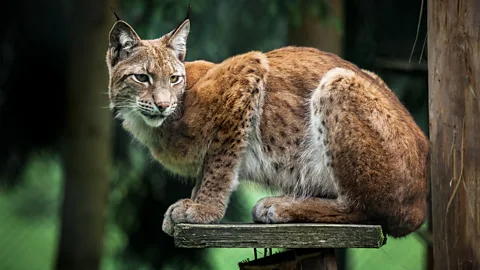
Yet it is possible to benefit local wildlife without actually removing these barriers. One way of improving connectivity for wildlife is by cutting small holes in the bottom, allowing small animals to move more easily between properties, boosting their chances of finding food or a mate. In the UK, hedgehog conservation groups advocate for 13cm x 13cm (5in x 5in) “hedgehog holes” at the base of walls and fences, to create “hedgehog highways”. This allows the spiky mammals to roam more freely among gardens, which in some places are their primary habitat.
Another way to think about fences is as an opportunity to add habitat, explains wildlife gardening expert Kate Bradbury. “I think all bare fences are a complete waste of space, so I cover everything in plants,” she says. “I’ve got climbing roses, clematis, a few types of honeysuckle, hops, ivy, climbing hydrangea. All of that provides a smorgasbord of food, flowers, berries and leaves,” she says.
As these plants mature, they can also provide nesting places for birds, Bradbury explains. Even mice, frogs and toads might clamber into this three-dimensional habitat. Drilling holes in fence posts, meanwhile, can provide a helping hand to solitary bees. While this doesn’t necessarily get around the fact that fences are a barrier to the free movement of some wildlife, it can still boost their ecological value.
Another option is to replace fences with hedges. Hedges provide habitat for a wide range of wildlife, from frogs to birds, and though they have the advantage of appearing like solid barriers to human eyes, for many species they are just as easy to navigate through as any other vegetation. They also tend to require less maintenance when chosen carefully, though some hedging plants can be invasive.
A suburban garden may look very different to the primaeval forests of Białowieża. But just like vast woodlands, gardens can provide valuable habitat for wildlife. As countries throughout the world grapple with the challenge of migration, many experts believe that border barriers are more likely to go up than down. And yet, the individual can have an impact. We can literally begin in our own backyard.

